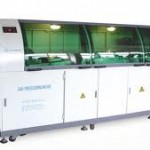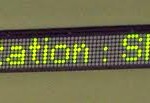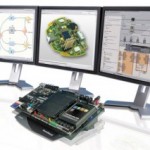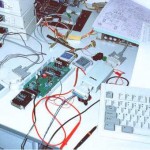Everyone is in a rush. From management with new ideas to implement, engineers under the pump to meet or beat deadlines, investors and shareholders to receive their financial returns, and generally everyone else in the organisation. Then you have the competition – who you need to beat to be first-to-market with your new product ideas or revisions. It just doesn’t stop!
You may be tempted with the concept of shipping just the minimum viable product, or looking to save as much time as possible. It is true that time can be saved in the design process – and there may be many quite obvious methods of doing so. However efficiency gains in any process can only be found and validated by professionals in each field. Therein lies the key to successful product development, and fine-tuning the process – you need the right team members with the expert knowledge in their field.
In the past you may have released products that have been satisfactory, had a low return or maintenance rate, with good customer feedback. However this may have just been a simple fluke – due to low volume, low feedback of any kind, and the end users not using the product to its rated specifications. But when it comes time to speed things up – the results of the new design may be altered directly or indirectly for the worse.
But how can this be? Knowledge – and the lack of it. Even in medium or large organisations, the design team may comprise of inexperienced new hires, staff who aren’t familiar with the latest revisions in your field, or well-meaning people who just don’t have enough design knowledge to do the best job possible. Their results may produce costly mistakes – both financially and legally. Let’s examine a couple of mistakes to see how easy they are to make, yet costly to recover from.
One recent – and very public example is the recent issue with the Lithium-Ion battery pack used for auxiliary power in the new Boeing 787 aircraft. In a constant drive to reduce weight, engineers chose Li-Ion batteries for their high energy to weight ratio – which theoretically is a great idea. However in practice one large battery was made with several individual packs that were packed together in a sealed compartment. This didn’t allow for any cooling space between the individual packs, thus causing overheating after use and a fire. Now the 787 fleet is grounded until further notice, causing great cost embarrassment to operating airlines, Boeing and associated organisations. [1] With more thought about the design and knowledge about Li-Ion batteries this potentially lethal situation could have been easily avoided.
Another much smaller yet equally hazardous example is that of a power supply design update. The previous design had the AC-AC transformer mounted separately on the chassis. However in a drive to reduce the enclosure size, a newer engineer decided to mount the transformer directly onto the PCB – and also reduce the PCB thickness to save production costs. In theory it looked great, and the test samples from production worked flawlessly. However after the first batch shipped to customers – they were not happy. The combination of the transformer weight, reduced PCB thickness and shock from the delivery process caused the PCBs to fracture – rendering the power supplies useless.
In both cases it would have taken an experienced, knowledgeable person a very short period of time to determine the changes were not for the better, and recommend positive design changes. And thus saving an incredible amount of time for restoration, money and the organisations’ reputation. It can be said that “experience pays” – every time. But what to do if you’re in a rush and don’t have the required experience?
Work with an organisation that has a large team of knowledgeable, experienced engineers with a wide range of design and manufacturing expertise across consumer, business and military-grade products – such as the LX Group. We can take your design ideas, revision requirements and produce the required customised solution for your team, or even follow through to final completion, including documentation, standards compliance and revisions.
For more information or a confidential discussion about your ideas and how we can help bring them to life – click here to contact us, or telephone 1800 810 124.
LX is an award-winning electronics design company based in Sydney, Australia. LX services include full turnkey design, electronics, hardware, software and firmware design. LX specialises in embedded systems and wireless technologies design. https://lx-group.com.au
Published by LX Pty Ltd for itself and the LX Group of companies, including LX Design House, LX Solutions and LX Consulting, LX Innovations.
[1] Peter Cohan, Forbes Magazine 27/01/2013 –http://www.forbes.com/sites/petercohan/2013/01/27/mit-professor-battery-fix-could-ground-787-until-2014/












